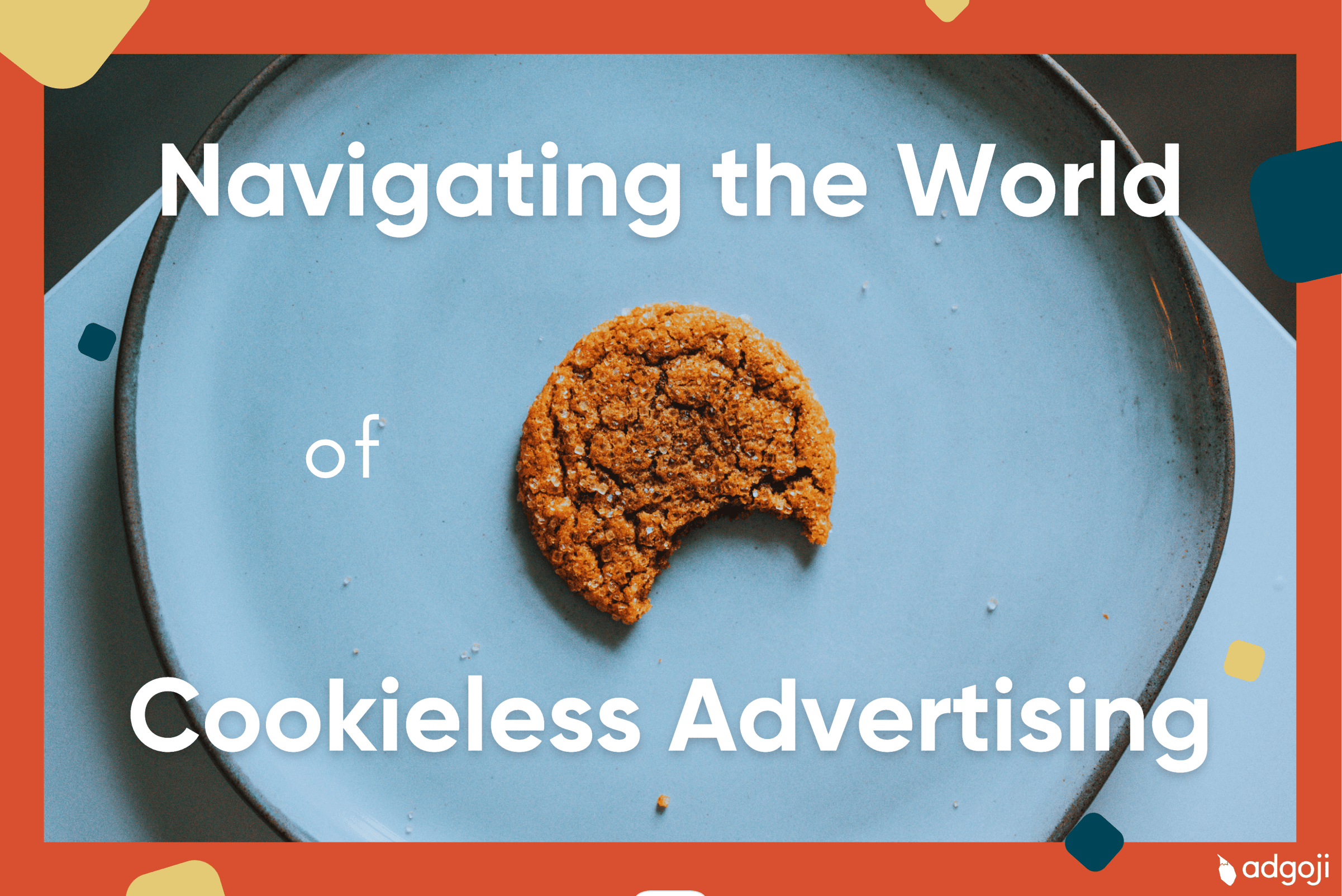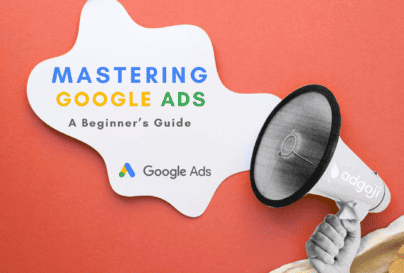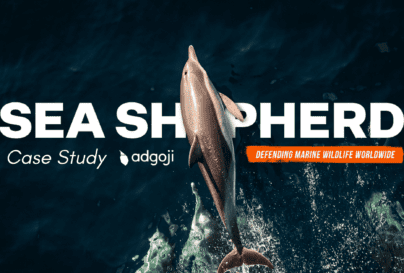Navigating the World of Cookieless Advertising
What’s the one thing you rely on for information? Your smartphone, maybe? Now, imagine a day when your go-to device suddenly loses connection, leaving you disconnected from everything. Unsettling, to say the least. The digital marketing world faces a similar worry about losing cookies.
You may have heard talks about a ‘cookieless future’ and might be curious about how this transition could potentially redefine the landscape of digital marketing, much like the thought of adjusting to a day without your smartphone’s connectivity. You’re not alone in fearing the potential challenges of this change, and that’s what we’ll cover in this article.
The world of digital marketing is on the brink of a major revolution, thanks to many regulatory changes and growing concerns around privacy. Our trusty little digital allies — third-party cookies — are on their way out. Now, I can almost hear you saying, “What’s the big deal? I’ve got first-party data. Isn’t that enough?” Well, yes, and no.
The truth is the departure of third-party cookies is a bit more complex, creating ripples that will touch every nook and cranny of our digital marketing practices. In this article, we’ll take a deep dive into this ‘cookieless future’ and how it will influence our strategies, campaigns, and conversions. Also, we’ll shed light on the new hero in town — ‘cookieless tracking’ — and how it could potentially become the main attraction of our post-cookie marketing world. Let’s get started.
Written by: Wesley Balten

Understanding Cookieless Advertising
In order to understand the impact of a cookieless future on digital marketing, it’s important to first understand what exactly cookieless advertising is.
Let’s take a step back and kick off this exploration by understanding what cookies really are. In digital marketing lingo, a cookie is a tiny piece of data that a website stores on a user’s browser while they’re visiting. These little data morsels serve as a memory for the website, allowing it to recognize the user and remember things like their preferences, what’s in their shopping cart, or whether they’re logged in.
First-Party Cookies
First-party cookies are often regarded as the “good guys” in the realm of online tracking and data collection. These are cookies created by the website you’re visiting. They play a significant role in enhancing user experience. They’re like the best kind of friend, always remembering your preferences, like your language setting, items added to a cart, or even the fact that you’ve logged in so that you don’t have to enter your password with every click. Additionally, first-party cookies are considered quite respectful of user privacy. They’re generated and stored by the same domain you’re visiting and typically do not track your browsing activity across other sites.
Third-Party Cookies & Controversy
Third-party cookies, on the other hand, are more like the “gossipy neighbors” of the digital world. These cookies are created by domains other than the one you’re visiting, and they enable certain functionalities like ad targeting, cross-site tracking, and retargeting. Essentially, these cookies help marketers follow you around the web with relevant advertisements, reminding you of those sneakers you just glanced at or the vacation you were daydreaming about.
Here’s where things get a bit sticky. Third-party cookies have been controversial for a while now, primarily due to privacy concerns. There is a growing discomfort around the idea that our online behavior, preferences, and interests are being tracked, often without explicit consent. As people have grown more conscious about the usage and sharing of their data from cookie tracking, apprehensions surrounding third-party cookies have come to the forefront. This has spurred legislative changes like GDPR and CCPA. Additionally, it has motivated tech giant Google, the custodian of the Chrome browser, to announce plans to phase out third-party cookies.
This potential shift towards a ‘cookieless future’ has stirred up quite the hornet’s nest in the digital marketing realm, and we’re all left wondering: what’s next?
The Evolution from Traditional Cookies
The use of traditional cookies in digital marketing has evolved over the years. Initially, cookies were primarily used to enhance user experience by remembering user preferences and login information on specific websites. They played a crucial role in improving website functionality and personalizing the user experience.
As digital marketing grew, cookies started to be used for ad targeting, cross-site tracking, and retargeting. This raised concerns about privacy and data security, as users became more aware of how their information was being collected and utilized.
In response to these concerns, regulatory changes like GDPR and CCPA were implemented to protect user privacy and give users more control over their data. These changes have paved the way for the shift to a cookieless future in the advertising industry, where the use of traditional cookies is being phased out in favor of more privacy-centric and transparent advertising practices.

Defining Cookieless Advertising in Today’s Context
In today’s digital advertising landscape, cookieless advertising refers to the practice of targeting and tracking users without relying on third-party cookies. It involves alternative methods of gathering and utilizing user data to deliver personalized ads and measure ad performance.
With the impending loss of third-party cookies, advertisers are exploring new strategies and technologies to continue reaching their target audience. This includes leveraging first-party data, contextual advertising, and alternative user identifiers like hashed emails or mobile ad IDs.
Cookieless advertising is driven by the need to respect user privacy and comply with privacy regulations. It requires a shift in mindset and a focus on building trust and transparency with users. By embracing cookieless advertising, marketers can continue to deliver relevant and personalized ads while respecting user privacy in a cookieless future. This is especially important in today’s digital landscape where relevance and personalization are key factors in successful advertising strategies.
The Drivers Behind the Shift to Cookieless
Privacy regulations like General Data Protection Regulation (GDPR) and California Consumer Privacy Act (CCPA) drive the shift to cookieless advertising by prioritizing user data protection. Concerns over data misuse and breaches push companies towards more privacy-centric strategies. Moreover, technological advancements such as AI and contextual targeting offer efficient alternatives to traditional cookie-based targeting, utilizing behavioral data to enhance user experience while respecting privacy.
This shift reflects a broader industry trend towards transparency and user empowerment. As businesses adapt to these changes, they redefine their marketing approaches to align with evolving regulations and consumer expectations, navigating the new cookieless landscape effectively.
Privacy Regulations and User Concerns
Privacy regulations and user concerns pose significant challenges in the cookieless advertising landscape. Strict regulations like GDPR and evolving privacy laws have heightened user scrutiny over data usage. Users demand transparency and control over their personal information to avoid intrusive tracking mechanisms. Marketers must adapt by respecting explicit consent and prioritizing user privacy. Understanding and complying with these regulations are crucial for maintaining trust with consumers. As user privacy becomes paramount, companies need to navigate these concerns delicately to build long-lasting relationships with their audience.
Google’s Technological Innovations and Their Impact
User-friendly tech advancements like the Privacy Sandbox by Google and Topics API are reshaping the landscape of digital marketing. These innovations aim to uphold user privacy while enabling targeted advertising. Embracing contextual targeting and explicit consent mechanisms, marketers can connect with audiences without compromising privacy. With the rise of privacy concerns, these solutions offer ways to reach target users effectively, including within the app environment. By adapting to these new methods, marketing teams can navigate the cookieless world with confidence, ensuring compliance with evolving privacy laws and enhancing consumer trust.
Preparing for a Cookieless Future
As we gear up for a cookieless future, focusing on enhancing first-party data strategies and exploring new technologies for audience targeting becomes crucial. Marketing teams need to adapt by prioritizing customer data and leveraging alternative strategies like contextual targeting. Embracing user privacy in a cookieless world entails rethinking traditional digital marketing approaches and preparing for a shift towards contextual advertising. By proactively adjusting to these changes, businesses can stay ahead in the evolving landscape of data privacy and advertising.

Enhancing First-Party Data Strategies
One way to level up in the cookieless world is by enhancing first-party data strategies. By honing in on your own customer data, you can create tailored digital marketing campaigns that resonate with your audience. This involves understanding your users’ behaviors and preferences, allowing you to craft personalized experiences. By utilizing insights derived from your customer information, your marketing teams can develop more effective strategies that prioritize user privacy while delivering targeted ads. Working with first-party data is like adding the perfect ingredient to your marketing mix, ensuring you bake up relevant and engaging campaigns.
Exploring New Technologies for Audience Targeting
In the ever-changing landscape of digital marketing, exploring new technologies for audience targeting has become paramount. Adapting to a cookieless world involves embracing innovative tools that leverage customer data effectively. From contextual targeting to advanced algorithms, marketing teams are delving into alternative strategies to reach their target audience. Technologies like programmatic advertising platforms are reshaping how ads are delivered, ensuring user privacy while maintaining effective ad targeting. By integrating these new tools into marketing campaigns, businesses can navigate the evolving realm of audience targeting with confidence and creativity.
Strategies for Success in Cookieless Marketing
Leverage contextual advertising by placing ads in relevant online spaces where your audience naturally frequents. Embrace privacy-first solutions that respect user data while achieving marketing goals. In the cookieless world, focus on user behavior and preferences to deliver personalized experiences without invasive tracking. Explore alternative strategies like contextual targeting to reach your target audience effectively. By adapting marketing efforts to the evolving landscape of data privacy, you can navigate the challenges of cookieless advertising successfully.

Leveraging Contextual Advertising
In the cookieless world, leveraging contextual advertising is key. Instead of relying on cookies, this strategy targets users based on the content they are currently viewing. By understanding the context of a user’s browser activity, marketing teams can deliver relevant ads without invasive tracking. This approach not only respects user privacy but also enhances the user experience. Contextual advertising, also known as cookieless targeting, aligns with privacy laws and shifts the focus to delivering valuable content to the target audience in a more organic and privacy-compliant manner. Using this tactic can pave the way for successful digital marketing campaigns in the cookieless era.
Embracing Privacy-First Solutions
As you can probably tell from the header, adopting privacy-first solutions is the key to success. By prioritizing user privacy and data protection, businesses can build trust and create meaningful connections. One approach is leveraging contextual targeting, delivering relevant ads based on the content users engage with, rather than tracking individual behaviors. This approach not only respects user privacy but also enhances the overall user experience. Moreover, opting for alternative strategies that focus on user consent and transparency can lead to more effective marketing campaigns, adapting to the evolving landscape of digital advertising.
The Role of AI and Machine Learning
AI and machine learning play pivotal roles in driving impactful marketing strategies. By leveraging predictive analytics, companies gain valuable audience insights to tailor campaigns effectively. Automation in ad placement and optimization streamlines processes, enhancing efficiency and effectiveness. These technologies empower marketing teams to adapt to the evolving digital advertising ecosystem efficiently. As user data privacy becomes paramount, AI enables precise targeting, ensuring relevant and respectful advertising. Embracing AI and machine learning fosters dynamic and personalized engagements, aligning marketing efforts with user expectations in a cookieless world.

Predictive Analytics for Audience Insights
Predictive analytics in marketing is like having a crystal ball to understand your audience. By analyzing customer data and behavior patterns, marketing teams can predict future trends and preferences. This data-driven approach allows for targeted and personalized campaigns, ensuring a better ROI. Using predictive analytics, businesses can identify potential customers, tailor their messages effectively, and improve overall marketing strategies. It’s like peeking into the future of consumer behavior, helping brands stay ahead in the cookieless world of digital advertising. Embracing these insights can significantly boost your marketing efforts and enhance the user experience.
Automating Ad Placement and Optimization
Maximizing ad efficiency, automation streamlines ad placement and tweaks for optimal performance. By leveraging AI and machine learning, ads reach the right audience at the right time. These smart algorithms analyze customer data and user behavior, enhancing targeting precision. Ad placements are fine-tuned based on real-time insights, ensuring maximum impact. Automation takes the guesswork out of ad optimization and boosts campaign effectiveness. For marketing teams, this means more time focusing on strategy and creativity rather than manual adjustments. Embracing automation paves the way for agile and dynamic advertising approaches in the cookieless world.
Challenges and Opportunities
Navigating the cookieless world presents both challenges and opportunities for marketing teams. Balancing data privacy while still effectively targeting users poses a significant hurdle. Adapting to privacy sandbox regulations like the GDPR requires a deep understanding of user privacy and consent. However, this shift also opens avenues for new advertising potentials. Exploring alternative strategies such as contextual targeting and first-party data utilization can mitigate these challenges. Embracing a privacy-first approach not only complies with regulations but also builds trust with consumers, ultimately enhancing marketing efforts in this evolving landscape.
Navigating Data Privacy and Compliance
With privacy regulations and evolving tech landscapes, understanding user privacy is key. Maintaining customer data security amidst cookieless tracking challenges requires savvy maneuvering by marketing teams. Exploring alternative strategies like contextual targeting and relevant ads can enhance marketing efforts while respecting consumer privacy. Embracing a privacy-first approach not only ensures data protection but also improves the user experience.

Unlocking New Advertising Potentials
Alternative strategies like contextual targeting and personalized offerings can pave the way for success. By harnessing the power of customer data and incorporating user privacy measures, businesses can create more efficient and ethical digital marketing campaigns. Exploring new ways to reach target users, such as through contextual advertising on social media platforms or email marketing, opens up exciting opportunities in the evolving landscape of online advertising. Adapting to these changes will be crucial in maximizing advertising potentials in the cookieless era.
One such options is adgoji, an easy platform for creating and optimizing campaigns. It simplifies the process, suitable for non-tech users. Using adgoji helps in making extremely effective campaigns that reach your target audience efficiently – no cookies needed!
Conclusion
In a world shifting towards cookieless advertising, understanding the evolving landscape is key to staying ahead. Privacy regulations and technological advancements are driving this change, prompting a need for enhanced first-party data strategies and adopting privacy-first solutions. Leveraging contextual advertising and exploring new targeting technologies will be crucial for success in this new era. AI and machine learning play a vital role, offering predictive analytics and automated optimizations. While challenges like data privacy compliance exist, unlocking new advertising potentials through innovative approaches presents exciting opportunities.
Frequently Asked Questions
How Can Advertisers Adapt to Cookieless Advertising?
Advertisers can adapt to cookieless advertising by enhancing their first-party data strategies, leveraging contextual advertising, and exploring new technologies for audience targeting. This may involve optimizing data management processes, implementing consent-based tracking, and diversifying marketing channels beyond social media and email marketing.
What Are the Key Benefits of Moving Away from Cookies?
Moving away from cookies offers several key benefits, including enhanced user privacy, improved data collection practices, and a more personalized user experience. By prioritizing privacy and utilizing alternative methods of data collection and targeting, advertisers can build trust with their audience and deliver more relevant and engaging ads.
What is Cookieless Attribution?
Cookieless attribution refers to the process of tracking and assigning credit to various touchpoints in a customer’s journey without relying on traditional browser cookies. This method has become increasingly important in the world of digital advertising due to privacy concerns and changes in browser settings that limit the use of third-party cookies. By using alternative methods such as device IDs, IP addresses, and first-party data, advertisers can still track and measure the effectiveness of their campaigns without compromising user privacy.




